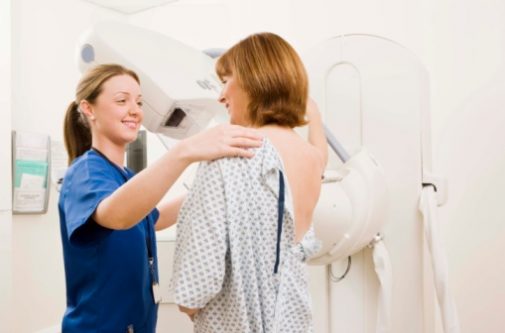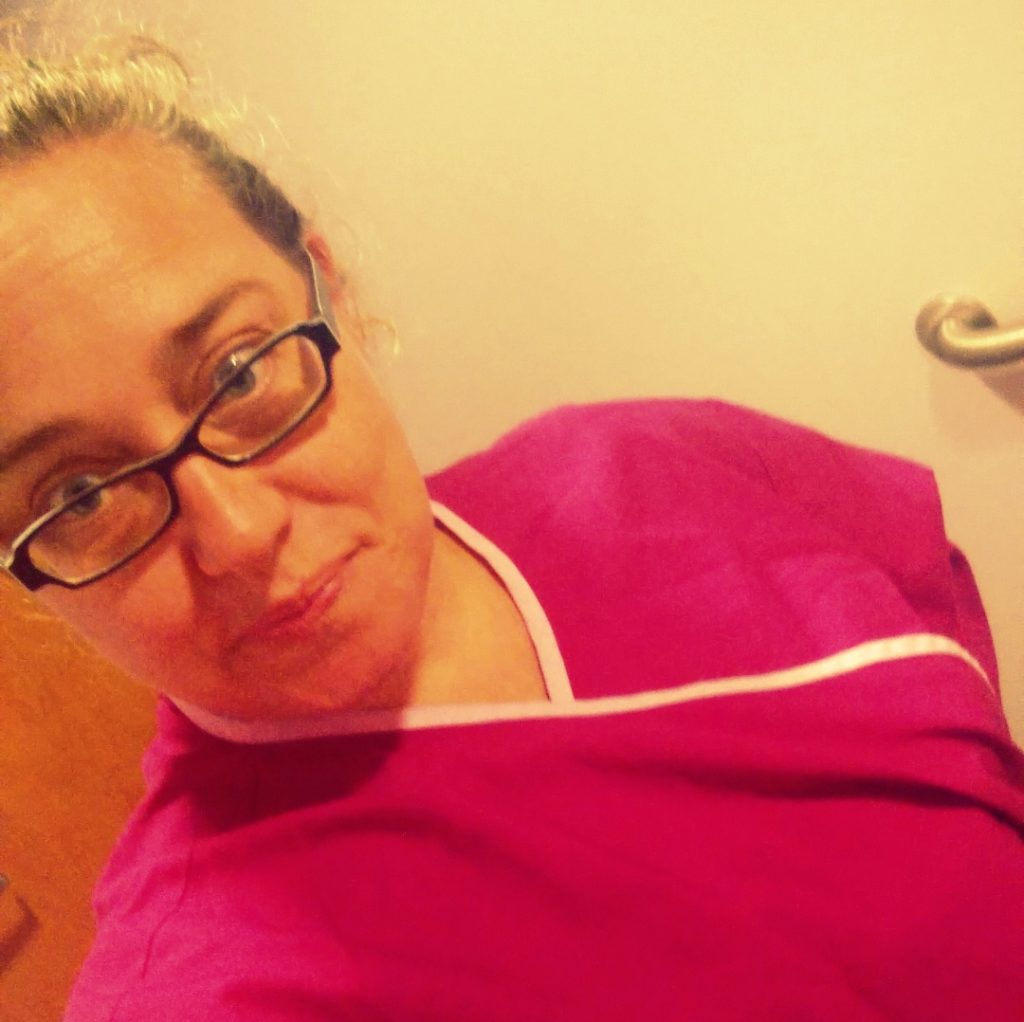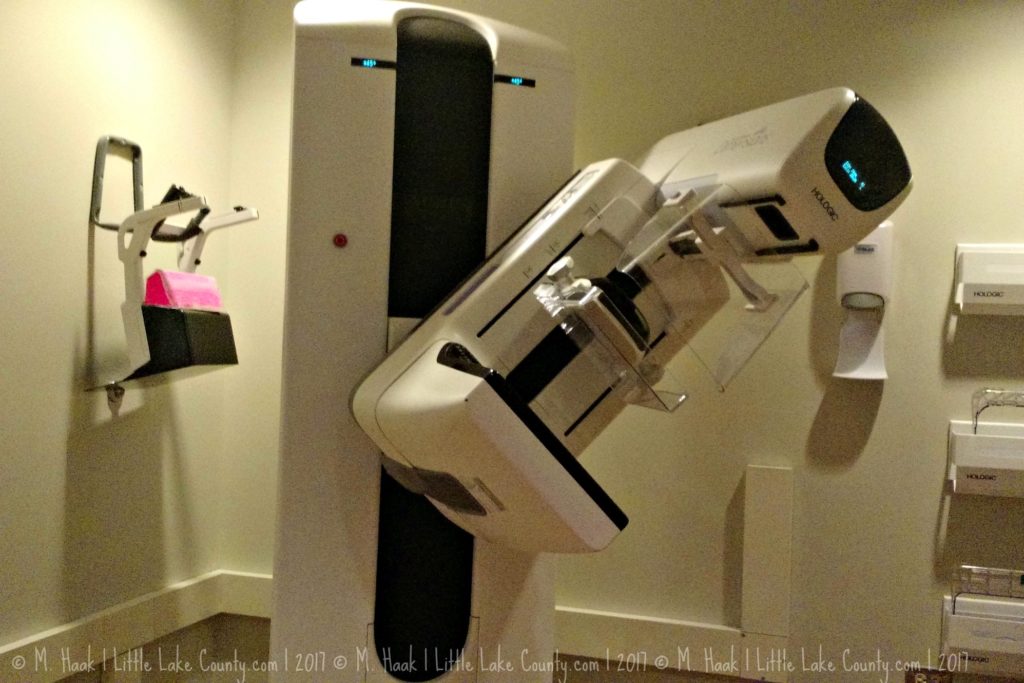“My very first mammogram”

Just about everyone has a connection to breast cancer.
According to the American Cancer Society, an estimated 252,710 new cases of invasive breast cancer will be diagnosed among U.S. women, as well as an estimated 63,410 additional cases of in situ breast cancer (have not metastasized).
There is a lot of confusion and misinformation about when, who and how you should be checked for breast cancer. Your decision should be based on conversations with your own health care team. I have twice found lumps and gone through ultrasounds, and with my family history, it was recommended that I start mammograms at 36.
My 30s were spent having babies and nursing. Mammograms are not recommended to be done while pregnant or nursing, with a minimum wait of six months after weaning. The American Congress of Obstetrics and Gynecologists, the American Medical Association and the American Cancer Society all recommend starting at 40.
 You may have seen the billboards “Mammogram Today. Results Today.” for Advocate Health Care. You do not need a referral or prescription for your exam. Mammograms are covered by most insurance providers. I chose Advocate Condell Medical Center in Libertyville, Ill., because of the convenience of location.
You may have seen the billboards “Mammogram Today. Results Today.” for Advocate Health Care. You do not need a referral or prescription for your exam. Mammograms are covered by most insurance providers. I chose Advocate Condell Medical Center in Libertyville, Ill., because of the convenience of location.
When most refer to a mammogram, they are referring to a screening mammogram, which is a routinely administered x-ray of the breast tissue to look for abnormalities. 3D mammography scans the breast left, taking pictures of thin slices and a computer reconstructs the image. Each slice can also be examined so details are more visible and there is less chance for abnormalities to hide behind overlapping tissue. Screening mammograms take just a few minutes.
A diagnostic mammogram is used after suspicious results are found on a routine screening or after a physician has identified signs of breast cancer. These are more detailed exams and take longer than a screening.

My technician took me into the room, explained the machine and how the process worked. She explained that all the images would read by a board-certified radiologist and sent to my gynecologist and primary care physician. I was asked a brief history – this is used to assess risk and not to make a diagnosis. I was also able to choose my method for receiving results – phone call, email or mail. The whole thing took less than 30 minutes, and I was on my way – wondering why I had not done it sooner.
I know you’re all thinking – but did it hurt? I am not exactly well endowed…a mostly, almost (on a good day) B cup bra. It was definitely not comfortable. The technician was very gentle and talked me through the whole process, explaining that there should be pressure but not pain, and that was definitely the case.
 Since my exam was after 2 p.m., it was just over 24 hours before I was called with my results. Not surprisingly, I was told that I have dense breasts. Breast density is presented on a scale, and younger women tend to have denser breasts. Breast tissue is made up of many parts – glands, ducts, fatty and fibrous connective tissues. It simply means that a dense breast has a lot of fibrous or glandular tissue and not a lot of fat. Breast density is common, and in most cases, is not abnormal.
Since my exam was after 2 p.m., it was just over 24 hours before I was called with my results. Not surprisingly, I was told that I have dense breasts. Breast density is presented on a scale, and younger women tend to have denser breasts. Breast tissue is made up of many parts – glands, ducts, fatty and fibrous connective tissues. It simply means that a dense breast has a lot of fibrous or glandular tissue and not a lot of fat. Breast density is common, and in most cases, is not abnormal.
Mammography is still considered the gold standard for breast cancer screening. The sooner abnormalities and cancer are found, the sooner treatment can begin. They shouldn’t be considered scary or painful but a routine procedure you do yearly, or on your doctor’s recommendations, just as you would do a pap smear.
I don’t think any women can say a pap smear is fun or comfortable, but we do it every year anyway, and I now look at mammograms the same way.
Melissa Haak is the “Mom-in-Chief” and founder of Little Lake County, a website that aims to connect Lake County parents with the family-friendly events, venues, products and services that meet their needs.
Our Breast Health Assessment estimates your five-year and lifetime risks of developing breast cancer.
Related Posts
Comments
About the Author
Melissa Haak is mom to four. She used to live in heels and dream of traveling the world; now she lives in her minivan and dreams of a clean kitchen. She writes about all the sticky bits of motherhood at Peanut Butter in my Hair and is the creator and editor of Little Lake County. She can be found on most social media sites as @PBinmyHair.
















